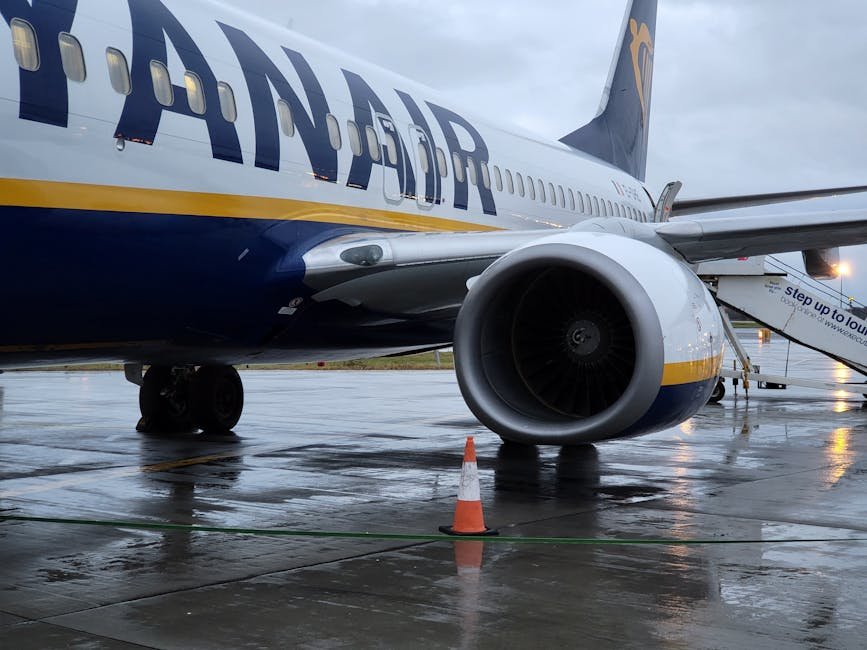Key Takeaways
- Disembark and Deboard both describe processes related to crossing geopolitical boundaries but differ in their specific applications and contexts.
- Disembark primarily emphasizes the formal act of leaving a vessel or transport in a territorial jurisdiction, often linked to immigration and customs procedures.
- Deboard focuses more on the procedural aspect of exiting transport modes within border zones, frequently associated with operational or security protocols.
- The two terms reflect subtle distinctions in regulatory contexts, with Disembark involving more legal and administrative formalities.
- Understanding their differences aids in grasping border control nuances and the management of people movement at international frontiers.
What is Disembark?

Disembark refers to the act of leaving a ship, aircraft, or other means of transport upon arrival at a geopolitical boundary, particularly when entering a new country or territory. It often involves formalities such as customs clearance, immigration checks, and adherence to international border regulations.
Legal and Administrative Procedures
Disembarking is typically accompanied by legal processes that ensure compliance with national entry requirements. Passengers must present travel documents and may be subject to inspection by border control authorities to verify eligibility for entry.
This process is crucial for maintaining the sovereignty of a state, allowing officials to monitor who enters their jurisdiction. The disembarkation point serves as a controlled interface between international and domestic spaces.
Role in Immigration Control
The act of disembarkation marks the official start of a person’s presence on foreign soil, triggering immigration protocols. Immigration officers evaluate passports, visas, and other permissions to determine lawful entry.
Disembarking can also initiate quarantine or health screening measures, especially in times of health crises or pandemic outbreaks. This ensures that national public health standards are upheld during cross-border movement.
Transport Modes and Disembarkation
Disembarkation applies to various transport modes, including maritime vessels, aircraft, and long-distance trains that cross international borders. Each mode has designated terminals or ports where disembarkation occurs under strict regulatory oversight.
For example, cruise ship passengers disembark at international ports where customs and immigration authorities inspect travelers before allowing entry. Similarly, air travelers disembark at international airports under the supervision of border agencies.
Impact on Geopolitical Relations
The protocols surrounding disembarkation reflect broader diplomatic relationships between countries, influencing bilateral agreements and border policies. Changes in these procedures often mirror shifts in geopolitical climate or security priorities.
Disembarkation points can become focal areas for international cooperation or tension, as they embody the physical manifestation of territorial sovereignty. Efficient processes facilitate trade, tourism, and cultural exchange, whereas restrictions may signal heightened security concerns.
What is Deboard?

Deboard refers to the act of passengers leaving a mode of transport, such as a bus, train, or airplane, usually in the context of crossing or arriving at a geopolitical boundary. It emphasizes the operational aspect of exiting rather than the legal formalities of border entry.
Operational Procedures at Border Points
Deboarding involves the systematic and organized exit of passengers to ensure safety and efficiency, especially at border crossings. Transport operators coordinate with border officials to manage passenger flow and prevent congestion in controlled zones.
This process often occurs within secured areas where identity verification and customs inspections are conducted before full entry is granted. The emphasis lies on maintaining order during the transition from international to domestic environments.
Security and Passenger Management
Deboarding procedures integrate security screenings to detect contraband or unauthorized individuals attempting to cross borders. These measures complement immigration checks, prioritizing the protection of national security and adherence to international agreements.
Passenger management during deboarding includes crowd control, baggage handling, and coordination with law enforcement agencies. Effective deboarding minimizes risks and ensures compliance with border protocols.
Differentiation by Transport Type
Deboarding is commonly used in contexts involving commercial flights, international buses, and trains that cross geopolitical boundaries. Unlike disembarkation, deboarding may occur multiple times during a journey, especially on multi-leg routes involving border checkpoints.
For example, international train services in Europe involve scheduled deboarding at border stations where passengers undergo inspections before continuing travel. This highlights the procedural nuances of deboarding as distinct from disembarkation’s finality at destination ports or airports.
Role in Border Infrastructure
Deboarding is closely linked to the design and operation of border infrastructure, such as customs halls, immigration checkpoints, and transit lounges. The physical layout of these facilities is optimized to support smooth deboarding processes and regulatory compliance.
Infrastructure investments that facilitate efficient deboarding contribute to improved cross-border mobility and reduce delays. This underscores the importance of transport hubs as critical nodes in geopolitical boundary management.
Comparison Table
The following table highlights key aspects differentiating Disembark and Deboard in the context of geopolitical boundaries.
| Parameter of Comparison | Disembark | Deboard |
|---|---|---|
| Primary Focus | Legal entry into a new territory | Operational exit from transport |
| Associated Authorities | Immigration, customs officials | Transport staff, security personnel |
| Typical Transport Modes | Ships, international flights, long-distance trains | Flights, buses, commuter trains |
| Regulatory Emphasis | Border control and sovereignty enforcement | Passenger flow and safety management |
| Timing in Journey | Usually at final destination or port of entry | Could occur at intermediate border stops |
| Legal Formalities | Includes visa checks, customs declarations | Primarily security checks and identity verification |
| Infrastructure Requirements | Customs and immigration stations | Designated transit and waiting areas |
| Impact on Movement | Initiates legal presence in territory | Facilitates controlled continuation or end of journey |
| Typical Documentation | Passports, visas, health certificates | Tickets, boarding passes, sometimes ID checks |
| Relation to Geopolitical Issues | Reflects national border policies | Reflects operational border management |
Key Differences
- Focus on Legal Status — Disembark involves establishing legal presence within a new geographic jurisdiction, unlike deboard which centers on the physical act of exiting transport.
- Nature of Procedures — Disembarkation incorporates extensive administrative formalities, whereas deboarding prioritizes passenger safety and orderly exit processes.
- Transport Context — Disembark is mostly linked to international ports and airports, while deboard is common at various transit points including intermediate border crossings.
- Interaction with Border Agencies — Disembark requires direct involvement of customs and immigration authorities, whereas deboard often involves coordination with transport operators and security teams.
- Implication on Journey Flow — Disembark marks entry into a country, potentially ending a journey, while deboard can be a temporary stop in a longer cross-border itinerary.
FAQs
Can disembarkation occur without deboarding?
Disembarkation inherently requires passengers to deboard; however, the emphasis differs as disembarkation focuses on legal entry while deboarding